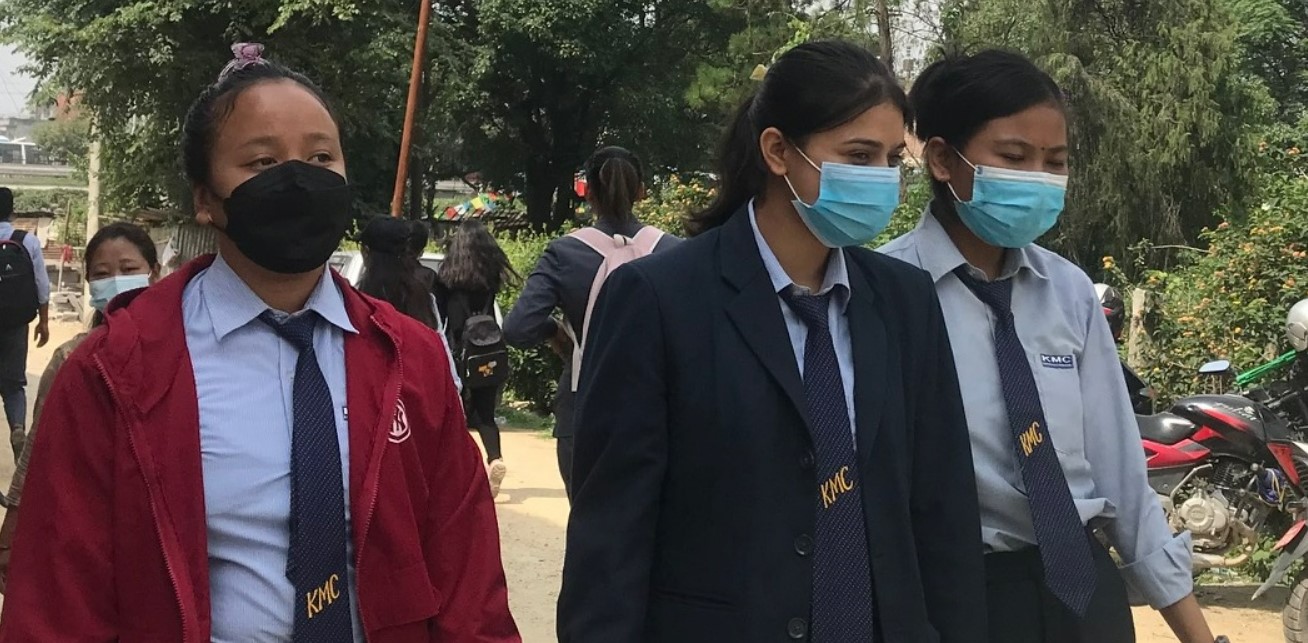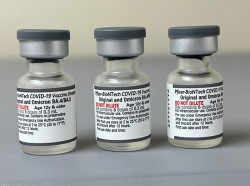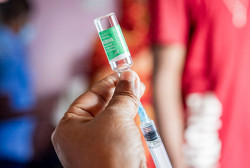Covid 19

The BA.5 sub-variant of Omicron, found in Nepal on July 3, is "the fastest of all coronavirus contagions" that can cause mass infections as seen in the second and third waves of COVID-19, say doctors.
The new sub-variant is the predominant source of current infections among increasing cases of COVID-19 around the world.
“In the new mutation that has come up, the s-protein can bind the receptor. It can easily infect the cells. This mutation causes more fusion of the cells in the lungs, increasing the chances of infection in the lungs,” said Dr Luna Bhatta Sharma, a virologist.
Various strains of coronavirus, undergoing change or mutation, involve the spike protein that the virus uses to connect to and gain entry into human cells.
How bad is it?

“The new sub-variant can re-infect people. That is, it can infect people again in just three months after an earlier infection,” explains Dr Sharma.
R0, pronounced “R naught,” is a mathematical term that indicates how contagious an infectious disease is. It is also referred to as a reproduction number.
The original Wuhan strain has an R0 of 3.3 and Delta has an R0 of 5.1. The Omicron variant has an average basic reproduction number of 9.5. The new sub-variant has its reproduction number of 18.6.
“This shows that the virus is highly contagious. It can spread quickly like measles,” added Dr Sharma.
The US Center for Disease Control and Prevention has said that the fast-spreading BA.4 and BA.5 sub-lineages of Omicron are estimated to make up a combined 70.1 per cent of the coronavirus variants in the United States.
Nepal has also been seeing a growth in the number of coronavirus cases of late.
According to the Ministry of Health and Population, 113 cases of coronavirus were reported on July 7. Earlier the number of cases had dropped to a single digit.
“It will be difficult to say anything about the variant in the country right away but we need to be vigilant about the virus and the infection spread,” said Dr Runa Jha, director at National Public Health Laboratory.
Nepal confirmed the infection of Omicron's new sub variant BA.5 for the first time on July 3. The sample was tested in the molecular and genomic sequencing research laboratory in Dhulikhel Hospital.
Dr Dipesh Tamrakar, Community Physician at Dhulikhel Hospital, said: “Though severity of the infection has not been reported yet, we need to be more cautious as this mutated virus is highly transmissible.
People with chronic health conditions such as diabetes, chronic obstructive pulmonary diseases, pneumonia and elderly people are prone to the severity of the infection because they are immunocompromised.”
The sub-variant BA.5 of Omicron was detected in South Africa in February 2022.
Those who have not taken vaccines against coronavirus infection are prone to the infection, according to the doctors.
The health ministry has reported that 80.7 per cent of people have taken the first dose of the vaccine against coronavirus infection in the country.
It is necessary to take full doses of vaccines. “It has been proved that the vaccine helps in lessening the severity of the infection. Therefore proper vaccination with booster doses is necessary,” said Dr Biraj Karmacharya, director of public health programme at the Dhulikhel Hospital.
Nepal has followed India’s patterns and trends of surge and decline in coronavirus cases. “We need to keep a close eye on the number of cases in India as we experience a similar trend of case growth here. Then the number of cases first increases in the Tarai regions and surges in other areas,” added Dr Karmacharya.
According to the Ministry of Health and Family Welfare, there are 115,212 active coronavirus cases in India as on July 6.
“The current surge of cases in the country makes us a bit curious. We need to observe what age group of people will be infected in India. We need to check on how the case severity will be in patients around the globe,” said Dr Sher Bahadur Pun, clinical research unit chief at Sukraraj Tropical and Infectious Disease Hospital, Teku.
Vaccines less effective
Various reports have revealed that the new sub variant would overcome the immunity developed in people from earlier infections and vaccinations.
According to the New England Journal of Medicine, studies have shown that "the levels of neutralizing antibodies" that previous infections or vaccinations create in the body are less effective against the BA.4 and BA.5 sub-variants, but still provide “substantial protection” against severe illnesses.
The US Food and Drug Administration has recommended COVID-19 vaccine manufacturers change the design of their booster shots beginning this fall to include components tailored to combat the currently dominant Omicron BA.4 and BA.5 sub-variants of the coronavirus.
“It takes time for new vaccines to arrive here for us. If we get the vaccines, the severity of the cases will decrease. If we can control the infection now and share the knowledge about it to the public then we won’t need to go to another lockdown,” said Dr Sharma.
The health ministry has requested people to take vaccines in their nearest vaccination centres.
Role of government
The government has an active role in preventing the spread of the contagion. Dr Sharma said: “It must start campaigning now to make the public aware. Using media to spread information is a must. Information about the new sub variant as tunes in telephones will comparatively be impactful for a large number of people.
Screening at health desks and making mask wearing mandatory will help. People are aware of the infection, its effects and severity as they have returned from their death beds, suffering from coronavirus in the past. It is just that they are in a relaxed mood now.”
The government should immediately start contact tracing of the people who have tested positive to the new variant. If we can isolate the cases in their early phase we can delay the transmissions and their number, said Dr Tamrakar.
BA.5 detected in two samples
Omicron BA.5 has been confirmed in two samples, the Ministry of Health and Population said.
The gene sequencing conducted by National Public Health Laboratory confirmed the sub variant. The samples were collected from Central Diagnostic Laboratory and Belahiya border.
According to Dr Sangita Mishra, spokesperson at the health ministry, “Gene sequencing was conducted on 32 samples from border areas and laboratories across the country of which BA.5 was confirmed in two samples. BA.2 sub-variant of Omicron was detected in 28 samples and two samples had BA.1 sub variant of omicron.”
The ministry has said that the virus is contagious and has requested people to follow safety health measures to prevent its spread.
A total of 979,998 people have tested positive coronavirus infection and 11952 have succumbed to the infection till July 7 across the country.
Preventive measures
- Maintain cross ventilation in the rooms
- Clean hands
- Avoid crowds
- Maintain social distance
- Cover coughs and sneezes






